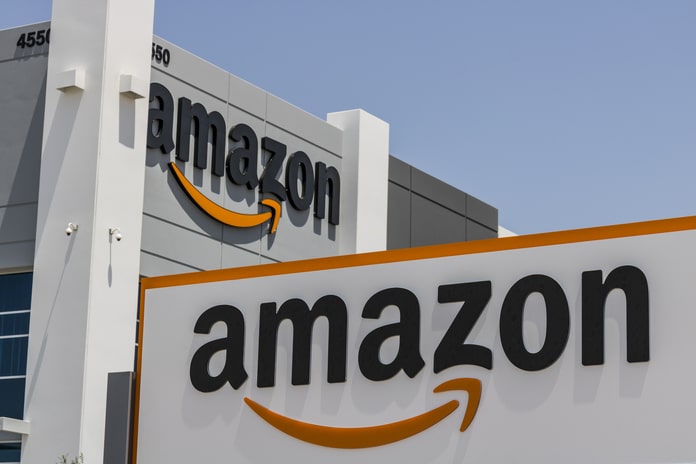Amazon (NASDAQ:AMZN) is a multinational corporation that is one of the world leaders in e-commerce, with 1,541,000 employees who continue to contribute to the company’s dominance in cloud computing and artificial intelligence. The corporation sells hundreds of its products on various platforms and allows third-party vendors to market its merchandise. Amazon also owns Twitch, one of the world’s largest live-streaming gaming platforms, and develops content for Amazon Prime Video, a subscription video streaming service with hundreds of series and movies. Amazon stock has gained 50% year-to-date.
The layoffs at AWS are concerning because they indicate that the slow pace of global economic recovery continues to put pressure on advertising budgets and new companies’ capacity to increase their use of Amazon’s services and platforms. Despite this, Amazon announced a multibillion-dollar investment at the end of July to expand the operations of its AWS data center, which will help reduce the technology gap with Microsoft Azure.
In terms of technical analysis, I believe we are constructing a corrective A-B-C pattern, which will conclude when a solid support zone in the range of $116.50-$118 is reached in the next three months.
On April 27, 2023, Amazon released financial results for the first three months of 2023, which not only continued to exceed analysts’ expectations but also demonstrated that revenues in the North America, International, and Amazon Web Services (AWS) segments continue to grow year on year, despite the strengthening of the US dollar and the war between Ukraine and Russia, which resulted in sanctions imposed on Russia and Belarus. Amazon’s share price has increased by approximately 50% since the beginning of 2023, which is a great result given the increased rivalry in the retail and cloud computing areas from important competitors such as Alibaba Group (NYSE:BABA), Alphabet (NASDAQ:GOOG), JD.com (NASDAQ:JD), and Microsoft (NASDAQ:MSFT).
Amazon’s Financial Situation and Prospects
Amazon’s revenue for the first three months of 2023 was $127.36 billion, a 14.6% decrease from the previous quarter and a 9.4% increase from the first three months of 2022. Because of ongoing geopolitical tensions in Eastern Europe, a challenging macroeconomic environment, higher interest rates reducing population purchasing power, and the US dollar’s continued strength against foreign currencies, Amazon’s actual revenue has exceeded analyst consensus estimates in only four of the last nine quarters. At the same time, Amazon’s Non-GAAP P/S [TTM] is 2.52x, which is 197.8% greater than the sector average but 25.35% lower than the five-year average.
Revenue in North America was around $76.88 billion, up 11% year on year but down 17.7% sequentially. The increase in sales is mostly due to increased product expansion, a gradual rebound in demand for advertising services, and an increase in Amazon Prime membership costs. At the same time, the revenue decline relative to the previous quarter does not raise concerns because there is a seasonal spike in demand for Amazon products on the eve of holidays such as New Year’s, Christmas, and Thanksgiving in each of the fourth quarters.
AWS, on the other hand, reported $21.35 billion in sales in the first quarter of 2023, a 15.8% year-over-year increase driven by greater customer use of Amazon’s cloud computing platforms.
Amazon’s revenue in the second quarter of 2023 is predicted to be $127-$133.28 billion, up 5.3% over the first three months of the year. These forecasts are in line with Amazon management’s guidance for the first quarter of 2023, which lessens the risks of slowing sales growth and makes the company’s outlook more predictable. This is especially crucial for investors because the business laid off 27,000 people in 2023, including those at AWS, Amazon shops, Twitch, and others.
The layoffs at AWS are concerning because they indicate that the slow pace of global economic recovery continues to put pressure on advertising budgets and new companies’ capacity to increase their use of Amazon’s services and platforms. Furthermore, despite its rapid growth, competition in the cloud computing sector is increasing. Microsoft Corporation, one of Amazon’s key competitors in this sector, continues to invest billions in OpenAI, one of the principal benefactors of the artificial intelligence craze and whose technology continues to transform the world for the better.
Amazon’s operational profit margin in the first quarter of 2023 was 3.89%, rising year on year and quarter on quarter. This financial number, however, is not only lower than that of the consumer discretionary sector, but also lower than that of significant competitors such as PDD Holdings and Alibaba, which is another issue discouraging investors from picking Amazon as a long-term investment.
I expect Amazon’s operating income margin to reach 4.3% by 2023 and marginally climb to 5.5% by 2024, driven by lower raw material and transportation costs, personnel reductions, and improved cost structure management efficiency.
The company’s profits per share (EPS) for the first three months of 2023 were $0.31, up 933.33% quarter on quarter, but only five of the previous nine quarters exceeded expert consensus projections. Amazon’s Q2 EPS, on the other hand, is predicted to be in the $0.14-$0.43 range, up 9.7% from the Q1 2023 consensus estimate.
Amazon, on the other hand, has a Non-GAAP P/E [FWD] ratio of 81.23x, which is 478.6% more than the sector average and 191.15% higher than the average for the last five years, showing a major overvaluation of the company during this period of global economic recovery.
I believe Amazon’s EPS beat is primarily due to higher segment margins, as it has not used cash flow to buy back shares in the previous three quarters. Simultaneously, the corporation has the authority to buy back shares for a total of $6.1 billion, a minor sum in light of increasing volatility in the stock market due to a likely increase in interest rates.
Amazon’s total debt was at around $178.55 billion at the end of the first quarter of 2023, a large rise from 2021 due to the urgent need to invest in the development of cloud computing platforms and new businesses to boost the rate of revenue growth. At the same time, while EBITDA has increased in recent quarters, the overall debt/EBITDA ratio has declined marginally to 3.12x.
However, given the stable cash flow, the improvement in the North America segment’s margins, and the maturity dates of senior notes and loans, I do not expect Amazon to have redemption issues, and the company will continue to invest in expanding its business to increase its share of the eCommerce market.
Conclusion
Amazon is a multinational corporation that is one of the world leaders in e-commerce, with 1,541,000 employees who continue to contribute to the company’s dominance in cloud computing and artificial intelligence.
Despite a slowdown in net income and revenue growth, Amazon’s capitalization increased in 2023, thanks to Mr. Market’s positive news about the implementation of initiatives from CEO Andy Jassy to improve the efficiency of business process management and stricter control over operating costs.
The layoffs at AWS are concerning because they indicate that the slow pace of global economic recovery continues to put pressure on advertising budgets and new companies’ capacity to increase their use of Amazon’s services and platforms. Furthermore, despite its rapid growth, competition in the cloud computing sector is increasing. Amazon announced a multibillion-dollar investment in late July to enhance its AWS data center operations in order to regain the segment’s revenue growth of 2023.
What About Amazon Stock?
I predict Amazon’s share price will correct to a solid support zone around $116.50-$118 in the next three months, given the rise in geopolitical concerns in Eastern Europe and the reduction in AI hype. I give Amazon stock a “hold” rating.
Featured Image: Megapixl © Jetcityimage















